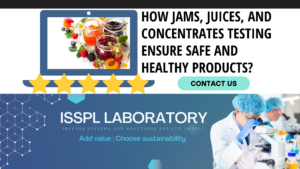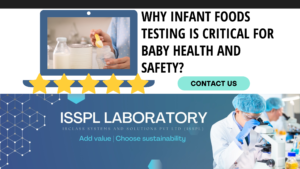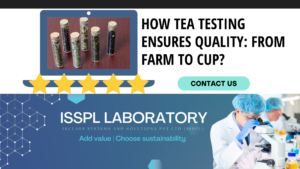An Overview by Team ISSPL - Analytical Testing Laboratory in India
ToggleA healthy and safe environment is the key to a sustainable future. turinabol where to buy It is also considered one of the critical parameters for any business and purchase decision-making, legislation, standards, and regulations. Therefore, it is vital to regularly monitor the impact that different industries, institutions, and organizations have on the environment. This impact is carefully studied, reviewed and analyzed by accredited environmental testing labs.
ISSPL is the most trusted and reliable destination for environmental testing & monitoring. It offers a comprehensive range of testing, sampling, and other expert services that help mitigate your environmental impact.
At IRCLASS, we offer IAQ monitoring and testing to help you improving indoor quality of the built environment and help to qualify your projects for LEED and EQ Credits.
As sustainable building practices gain prominence, LEED (Leadership in Energy and Environmental Design) certification has become a hallmark of environmentally responsible buildings. One crucial aspect of achieving LEED certification is ensuring excellent Indoor Air Quality (IAQ). A healthy indoor environment not only benefits occupants’ well-being but also contributes to the overall sustainability of the building.
The LEED certification process emphasizes the importance of providing occupants with a comfortable and healthy indoor environment. IAQ is a critical factor in achieving this objective. Poor indoor air quality can lead to health issues, reduced productivity, and increased absenteeism. To achieve LEED certification, projects must meet or exceed the IAQ requirements set by the U.S. Environmental Protection Agency (EPA) and the American Society of Heating, Refrigerating and Air-Conditioning Engineers (ASHRAE).
IAQ Strategies to achieve LEED:
A. Source Control:
One of the primary strategies for achieving optimal IAQ is by controlling indoor pollution sources. Building materials, furniture, cleaning products, and even occupants can release volatile organic compounds (VOCs) and other harmful pollutants into the air. Choosing low-emitting materials and products and implementing proper ventilation systems help minimize indoor pollution sources.
B. Effective Ventilation:
Adequate ventilation plays a crucial role in maintaining IAQ. LEED-certified buildings employ advanced ventilation systems that bring in fresh outdoor air while efficiently removing indoor pollutants. This helps in preventing the buildup of stale air and maintaining a healthy environment for occupants.
C. Filtration and Air Cleaning:
High-efficiency air filters are installed in LEED-certified buildings to trap airborne particles and allergens. Additionally, air cleaning technologies, such as UV-C germicidal irradiation and air purifiers, may be incorporated to further improve indoor air quality.
D. Monitoring and Maintenance:
Regular monitoring and maintenance of ventilation systems are essential to ensure their optimal performance. LEED-certified buildings implement scheduled inspections, filter replacements, and equipment cleaning to maintain IAQ standards.
Indoor air quality (IAQ) monitoring
Indoor air quality (IAQ) monitoring involves the measurement and assessment of various parameters to determine the quality of the air within enclosed spaces. By monitoring these key indicators, occupants and building managers can identify potential issues and take appropriate actions to improve indoor air quality. The primary measurements used in IAQ monitoring include:
Particulate Matter (PM):
Particulate matter refers to tiny particles suspended in the air, which can be inhaled into the respiratory system. PM is categorized based on its size, such as PM10 (particles with a diameter of 10 micrometers or less) and PM2.5 (particles with a diameter of 2.5 micrometers or less). High concentrations of PM can lead to respiratory problems and other health issues.
Volatile Organic Compounds (VOCs):
VOCs are organic chemicals that can easily evaporate into the air at room temperature. They are emitted by various sources, including building materials, paints, cleaning products, and furnishings. Prolonged exposure to VOCs can cause eye, nose, and throat irritation, as well as headaches and dizziness.
Carbon Dioxide (CO2):
CO2 is a natural component of the air, but elevated levels can indicate poor ventilation and the presence of large numbers of occupants. High CO2 levels can lead to drowsiness, decreased cognitive function, and discomfort.
Temperature and Humidity:
Monitoring indoor temperature and humidity is crucial for maintaining occupant comfort and preventing the growth of mold and mildew. Proper temperature and humidity levels contribute to a healthy indoor environment.
Carbon Monoxide (CO):
Carbon monoxide is a colorless, odorless gas that is produced by incomplete combustion of fuels such as gas, oil, and wood. It is highly toxic and can be life-threatening in high concentrations.
Ozone (O3):
Ozone is a reactive gas that can be beneficial in the upper atmosphere but is harmful when present at ground level. High ozone levels indoors can cause respiratory irritation and worsen asthma symptoms.
Formaldehyde:
Formaldehyde is a common indoor air pollutant emitted by certain building materials, furniture, and household products. Prolonged exposure to formaldehyde can cause respiratory and skin irritation.
Radon:
Radon is a naturally occurring radioactive gas that can seep into buildings from the ground. Long-term exposure to radon is a known cause of lung cancer.
Air Exchange Rate:
The air exchange rate measures how quickly indoor air is replaced with fresh outdoor air through ventilation. A higher air exchange rate helps dilute indoor pollutants and maintain good IAQ.
Outdoor Air Quality:
Monitoring outdoor air quality is also essential, as pollutants from outside can enter indoor spaces through ventilation systems and open doors/windows.
IAQ monitoring is typically carried out using specialized equipment, including air quality monitors, sensors, and data loggers. These devices provide real-time or continuous measurements, allowing occupants and building managers to take immediate actions when IAQ parameters are outside recommended levels. Regular IAQ monitoring and maintenance help ensure a healthier indoor environment, promoting well-being and productivity for everyone inside the building.
Benefits of IAQ Measurement for LEED Certification:
Occupant Well-Being: IAQ measurement ensures a healthier indoor environment, reducing the risk of respiratory problems, allergies, and other health issues for occupants.
Energy Efficiency: Optimizing ventilation rates and HVAC systems based on real-time data leads to energy savings and lower operating costs.
Environmental Impact: By prioritizing IAQ, buildings contribute to reduced greenhouse gas emissions, supporting broader sustainability goals.
Regulatory Compliance: Adherence to LEED’s stringent IAQ requirements ensures compliance with industry standards and guidelines.
We serve the industries
- Infrastructure
- IT/Software/Data Centre
- Pharmaceuticals & Medical Device
- Power Generation
- Cement
- Steel
- Food & Beverages
- Refineries
- Automobiles
- Paint Manufacturing
- Research & Development Centre
- Hotels & Institution
- Petrochemicals
- Mining & Exploration
- Oil & Gas, Smelters
- Transportation
- Water
- Environment, Health and Safety
- Ancillary Parts Manufacturer
IRCLASS, a leading testing, inspection and certification company globally and in Jaipur we have state-of-the art ISSPL Lab accredited by NABL/ ISO 17025: and recognized by MOEF/CPCB to help clients meet environment compliance requirements.
Please find more details in our website www.isspllab.com and www.irclass.org
If you plan to get your project tested or want to learn more about other solutions for IAQ, contact us today at lab@irclass.org!







